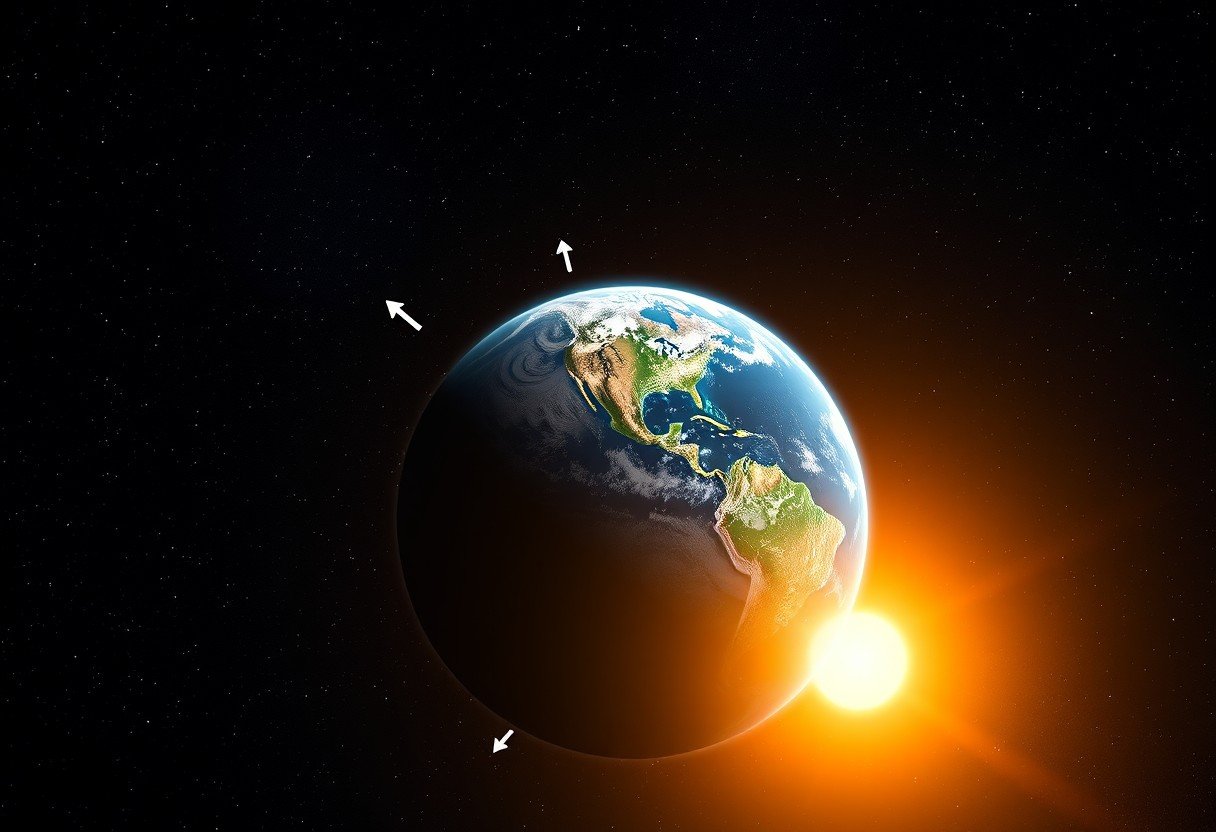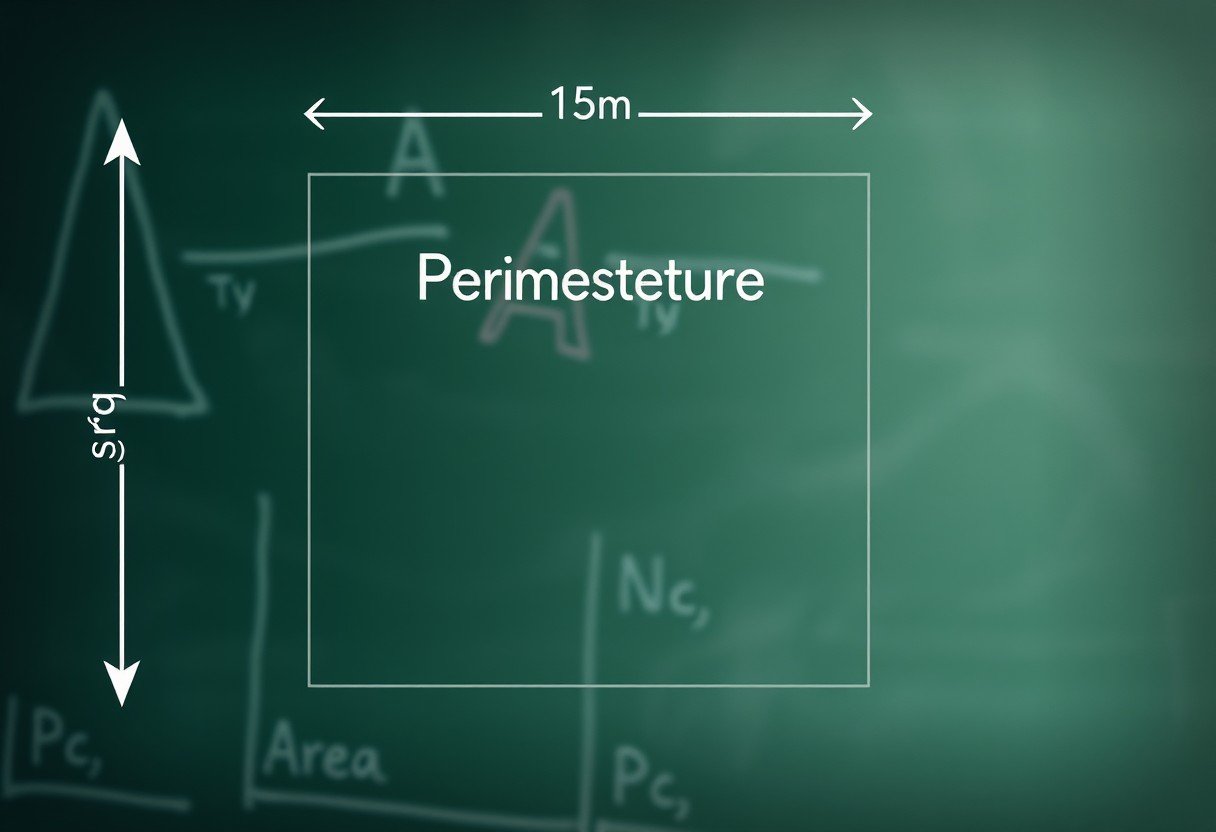Have you ever wondered what invisible force keeps the Earth spinning around the Sun? This cosmic connection is due to gravity, a fundamental force of nature. The gravitational pull between the Earth and the Sun is immense, and calculating its strength reveals the incredible power that governs our solar system and keeps our planet in a stable, life-sustaining orbit. Understanding this force helps explain everything from our seasons to the very structure of our cosmic neighborhood.
Understanding Newton’s Law of Gravitation
The entire concept of gravitational force between two objects, like the Earth and Sun, is explained by Newton’s Law of Universal Gravitation. This law is a cornerstone of physics and provides a clear mathematical formula to figure out the strength of this pull.
The formula looks like this: F = G * (m1 * m2) / r². In simple terms, it means the force (F) depends on the mass of the first object (m1), the mass of the second object (m2), and the distance between them (r).
The ‘G’ is the gravitational constant, a fixed number that helps make the calculation accurate. The law states that the force is directly proportional to the product of their masses and inversely proportional to the square of the distance between them. This means more massive objects pull harder, and objects farther apart pull weaker.
The Key Players: Mass of the Sun and Earth
To calculate the force, you first need to know the mass of the two celestial bodies involved. Mass plays the most significant role in determining the strength of gravity. A more massive object will exert a stronger gravitational pull.
The Sun is the heavyweight champion of our solar system, with a mass about 333,000 times that of the Earth. This massive difference is why planets, including ours, orbit the Sun and not the other way around.
| Celestial Body | Mass (in kg) |
|---|---|
| Sun | 1.989 x 10³⁰ |
| Earth | 5.972 x 10²⁴ |
Even though the Earth’s mass is tiny compared to the Sun’s, it is still substantial enough to exert its own gravitational force. This mutual pull is what defines the relationship between the two bodies.
How Distance Affects the Gravitational Pull
The second critical factor in Newton’s equation is the distance between the objects. Unlike mass, which strengthens gravity, distance weakens it. And it doesn’t just weaken it a little; the force decreases significantly as the distance increases.
This relationship is known as the inverse square law, meaning if you double the distance, the force becomes four times weaker. The average distance between the Earth and the Sun is about 93 million miles (150 million kilometers), a unit often called an astronomical unit (AU).
Because Earth’s orbit is slightly elliptical, this distance changes throughout the year. Our planet is closest to the Sun (perihelion) in January and farthest away (aphelion) in July. These slight variations cause minor changes in the gravitational force between them.
Putting it All Together: The Calculation
With all the components understood, you can now apply the formula. By plugging in the known values for the masses, distance, and the gravitational constant, we can find the exact magnitude of the force.
Here are the values we need to use:
- G (Gravitational Constant): 6.674 × 10⁻¹¹ N(m/kg)²
- m1 (Mass of the Earth): 5.97 × 10²⁴ kg
- m2 (Mass of the Sun): 1.99 × 10³⁰ kg
- r (Average distance): 1.496 × 10¹¹ meters
When you substitute these numbers into the formula F = G * (m1 * m2) / r², you get a result. The calculated gravitational force acting on the Sun due to the Earth is approximately 3.54 x 10²² Newtons. This is an incredibly large number, showcasing the powerful bond between our planet and its star.
Why Earth’s Pull on the Sun is Often Ignored
According to Newton’s Third Law of Motion, for every action, there is an equal and opposite reaction. This means the force Earth exerts on the Sun is exactly the same magnitude as the force the Sun exerts on Earth. So, why do we only talk about the Earth orbiting the Sun?
The answer lies in their immense difference in mass. Imagine an adult and a small child pulling on opposite ends of a rope with the same force. The child will move much more than the adult. Similarly, while the forces are equal, the effect on the Sun is negligible. The Earth’s pull causes a tiny wobble in the Sun’s position, but because the Sun is so massive, it barely moves, while the less massive Earth is whipped around in a full orbit.
The Bigger Picture: Gravity’s Role in Our Solar System
The gravitational force between the Earth and the Sun is not just an interesting calculation; it’s the foundation of our solar system’s stability. This force acts as a celestial tether, keeping Earth in a predictable path. Without it, our planet would fly off in a straight line into the cold, dark expanse of space.
This balance of gravity and motion dictates the length of our year, the existence of seasons, and the stable environment that has allowed life to flourish. Understanding these gravitational interactions is key for astrophysicists studying everything from the formation of planets and stars to the large-scale structure of entire galaxies.
Frequently Asked Questions about Earth-Sun Gravity
What is the formula to calculate the gravitational force between Earth and Sun?
The force is calculated using Newton’s Law of Universal Gravitation: F = G * (m1 * m2) / r², where G is the gravitational constant, m1 and m2 are the masses of the two objects, and r is the distance between them.
How strong is the gravitational force between the Earth and the Sun?
The calculated gravitational pull between the Earth and the Sun is an immense force of approximately 3.54 × 10²² Newtons. This force is responsible for keeping the Earth locked in its orbit.
Does the Earth’s distance from the Sun change the gravity?
Yes, because Earth’s orbit is an ellipse, not a perfect circle, the distance varies slightly. According to the inverse square law, the gravitational force is slightly stronger when Earth is closer to the Sun and weaker when it is farther away.
If Earth pulls on the Sun, why doesn’t the Sun move much?
The forces are equal in magnitude, but the Sun’s mass is over 300,000 times greater than Earth’s. Because of its massive inertia, the Sun’s acceleration due to Earth’s pull is incredibly small and results in only a tiny wobble.
What would happen if this gravitational force disappeared?
If the gravitational force were to vanish suddenly, the Earth would no longer be held in orbit. It would travel in a straight line tangent to its orbital path, flying off into space and away from the Sun’s light and warmth.









Leave a Comment